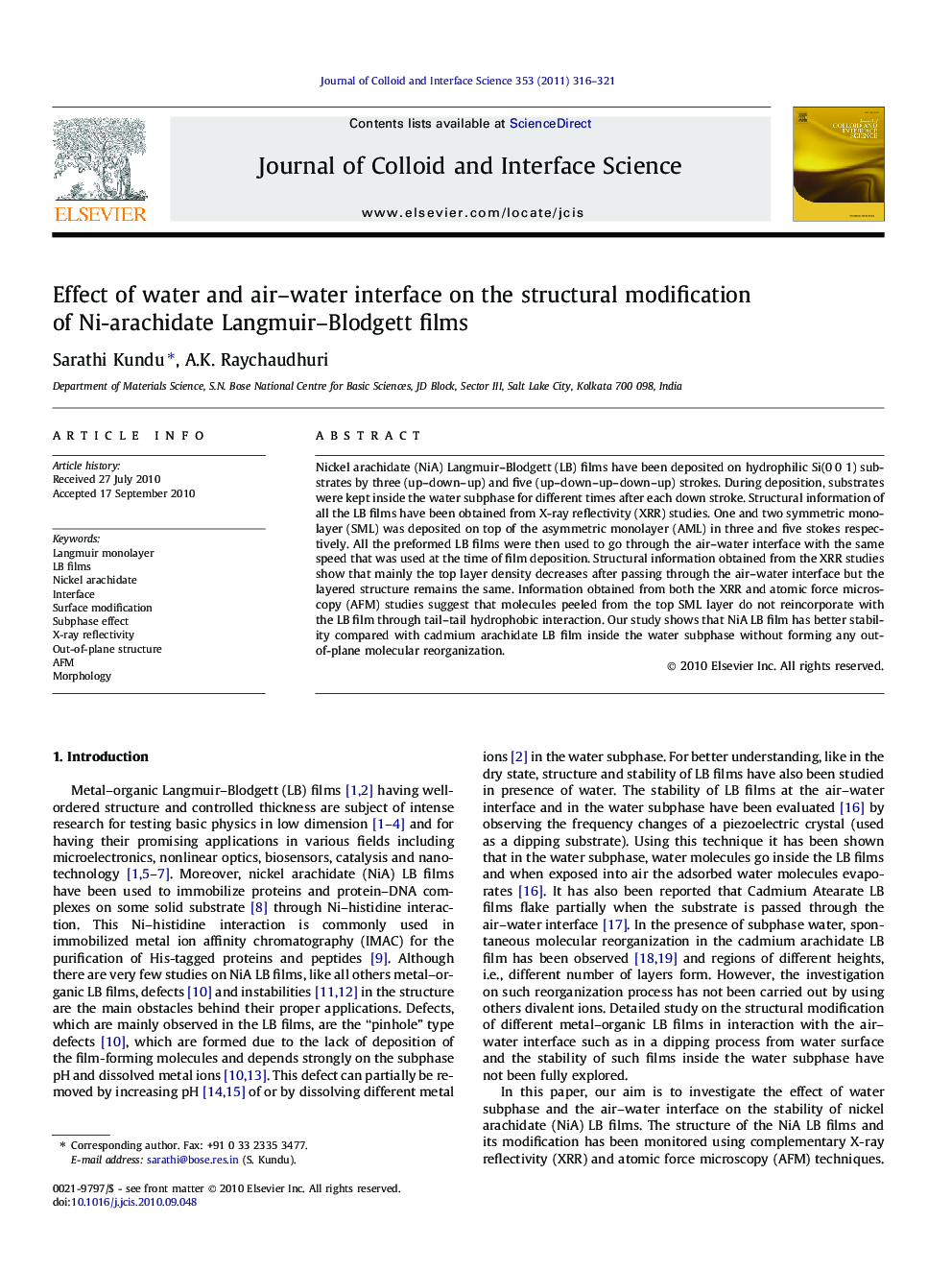| Article ID | Journal | Published Year | Pages | File Type |
|---|---|---|---|---|
| 609006 | Journal of Colloid and Interface Science | 2011 | 6 Pages |
Nickel arachidate (NiA) Langmuir–Blodgett (LB) films have been deposited on hydrophilic Si(0 0 1) substrates by three (up–down–up) and five (up–down–up–down–up) strokes. During deposition, substrates were kept inside the water subphase for different times after each down stroke. Structural information of all the LB films have been obtained from X-ray reflectivity (XRR) studies. One and two symmetric monolayer (SML) was deposited on top of the asymmetric monolayer (AML) in three and five stokes respectively. All the preformed LB films were then used to go through the air–water interface with the same speed that was used at the time of film deposition. Structural information obtained from the XRR studies show that mainly the top layer density decreases after passing through the air–water interface but the layered structure remains the same. Information obtained from both the XRR and atomic force microscopy (AFM) studies suggest that molecules peeled from the top SML layer do not reincorporate with the LB film through tail–tail hydrophobic interaction. Our study shows that NiA LB film has better stability compared with cadmium arachidate LB film inside the water subphase without forming any out-of-plane molecular reorganization.
Graphical abstractNickel arachidate (NiA) Langmuir–Blodgett (LB) film has better stability inside the water subphase and mainly the top layer density decreases after passing through the air–water interface.Figure optionsDownload full-size imageDownload high-quality image (83 K)Download as PowerPoint slideResearch highlights► Nickel arachidate LB film has better stability inside the water subphase compared with cadmium arachidate LB film. ► Molecular reorganization inside the water subphase does not take place like cadmium arachidate LB film. ► Mainly the top SML layer density decreases after passing the LB film through the pure air–water interface. ► Molecules peeled from the top SML layer do not reincorporate with the LB film.
